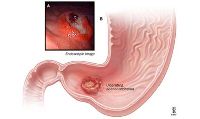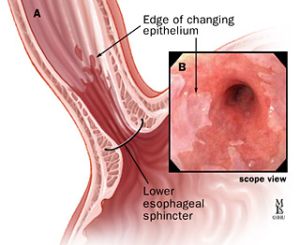
Stomach Surgery
The common problems of stomach seen in patients are related to stomach ulcers and cancer. They can present with upper abdominal pain, bleeding or sometimes repeated vomiting. The cause may be , smoking, alcohol, too spicy and fatty food and sometimes due to infection with bacteria called H pylori. An Endoscopy is required to diagnose this condition. Patient may need long course of antacid medication. Sometimes emergency endoscopy, admission and occasionally emergency surgery may be required if there is massive bleeding from the ulcer or the ulcer perforates (becomes a hole through and through the wall) leading to spread of infection in your tummy. Very rarely a long standing ulcer can block the outlet of stomach due to recurrent scarring. Such patients have recurrent vomiting and lose weight. After thorough evaluation to exclude cancer, such patients may need laparoscopic bypass surgery to open up their Gastro Intestinal passage. Overall due to availability of newer and better antacid medications, the complications of stomach ulcer is less frequently seen compared to the past.
...more
Pancreatic Surgery
Pancreatic problems are some of the most complicated and notorious problems. No all centres and doctors are expert in managing these conditions. acute pancreaticIt is a condition causing inflammation of the pancreas. The patient usually have very severe upper abdominal pain, back pain and vomiting. We need to get some blood tests to confirm the diagnosis of Acute pancreatitis. The two most common causes of pancreatitis are alcohol intake and Gallbladder stone disease. Of all the patients with Acute Pancreatitis about 70% have mild to moderate pancreatitis, meaning not having any other organ dysfunction. All these patients recover in few days time and usually do not require any surgery or intervention.
...more
Laparoscopic Surgery
Laparoscopic surgery: a revolution the advent of laparoscopic surgery has created a revolution in abdominal surgeries. Initially applied just for diagnostic purpose, it has rapidly gained popularity for the management of appendicitis and gallstone disease, making it the gold standard treatment for these conditions. With improvement in the instrumentation and surgical skills today almost all of the abdominal surgeries are safely possible by laparoscopic method in expert hands and after proper patient selection. All this has led to a low threshold for surgical treatment for many conditions as the morbidity related to surgery has gone down significantly with laparoscopic surgeries. Dr. Chirag thakkar is high experienced in all kind of laparoscopic surgeries. He is one of the best surgeons for laparoscopic.
...more
Lap. Gallbladder Stone Surgery
Laparoscopic cholecystectomy has now replaced open cholecystectomy as the first-choice of treatment for gallbladder stone and inflammation of the gallbladder. Very small (1 cm and 1/2 cm) incisions are made through which the surgeon introduces a laparoscope (lens) and specialized instruments to perform the extraction of the gall bladder. This is a safe procedure that provides several benefits in the post-operative period. This includes less pain, faster recovery, lower infection rate and less chances of incisional hernias. It also leads to faster return to normal activities.
...more
Hernia Surgery
In simple language hernia is a defect in the abdominal wall, through which the abdominal contents like intestine, omentum (intra- abdominal fat) or other organ protrude or bulge out forming a swelling. Usually the swelling increases on straining, coughing, walking and causes discomfort.
...more
Heartburn (GERD & Hiatus Hernia)
Although “heartburn” is often used to describe a variety of digestive problems, in medical terms it is actually a symptom of gastroesophageal reflux disease. In this condition, the acids from the stomach reflux or accidently “back up” into the esophagus (food pipe). Heartburn is described as a harsh, burning sensation in the area in between your ribs or just below your neck. The feeling may radiate through the chest and into the throat and neck. Many adults in the United States experience this uncomfortable, burning sensation at least once a month. Other symptoms may also include vomiting, difficulty swallowing and chronic coughing or wheezing.
...more
Esophageal Surgery
Esophageal Surgeries Esophageal problems are among the most complex problems affecting the body. It requires evaluation by an expert handling these problems on a routine basis. The common problems affecting the esophagus that is our Food pipe are Gastro Esophageal Reflux disease It is one of the most common diseases affecting the humans. Though not life threatening, it is a major cause of poor quality of life. A specialised test called 24 hr pH and Impedance study is done to evaluate this condition accurately and plan treatment.
...more
Esophageal Manometry
An important investigation for Esophageal motility disorders sophageal manometry is a test used to measure the function of the lower esophageal sphincter and the muscles of the esophagus. Lower esophageal sphincter or LES is the valve that prevents reflux (coming back) of gastric acid into the esophagus. Esophageal manometry measures the rhythmic muscle contractions that occur in your esophagus when you swallow. Esophageal manometry also measures the coordination and force exerted by the muscles of your esophagus. This investigation will tell your doctor if your esophagus is able to move food to your stomach normally. To know why you might be experiencing a problem with your digestive system, it helps to understand the swallowing and digestive processes.
...more
Endoscopy
An endoscopy is a procedure where the inside of your body is examined using an instrument called an endoscope. An endoscope is a long, thin, flexible tube that has a light source and camera at one end. Images of the inside of your body are relayed to a television screen. Endoscopes can be inserted into the body through a natural opening, such as the mouth and down the throat, or through the bottom. An endoscope can also be inserted through a small cut (incision) made in the skin when keyhole surgery is being carried out.
...more
Anorectal Surgery
Ano-rectal Surgeries Ano-rectal problems are quite common in the general population. Many a times medical help is not taken out of embarrassment. The main causes are of these problems is constipation and diet issues. Though a blanket term piles is used for all such problems actually there are different diseases affecting the ano-rectal region.
...more
Achalasia Cardia
What is Achalasia Cardia? Achalasia, also known as esophageal achalasia, achalasia cardia ,cardiospasm, and esophageal aperistalsis is a disorder of the esophagus (food pipe) in which the nerves and muscles do not work properly, causing swallowing difficulties, sometimes chest pain, regurgitation (food coming back in throat) and its consequent coughing and breathing problems (if food gets into the lungs). The cause of achalasia is unknown; however, there is degeneration of the esophageal muscles and, more importantly, the nerves that control the muscles. Achalasia is a rare disease of the muscle of the esophageal body and the lower esophageal sphincter (LES). LES is a valve made of muscles at the lower end of food pipe (Esophagus) which opens when a person swallows foods and functions to prevent the food from coming back from stomach to esophagus after eating. In Achalsia this valve do not open on swallowing as it should do normally. Also the muscles of the food pipe which contract and send the food down normally do not work properly. Both the things together makes the food to retain in the food pipe for a longer time. Gradually with time if no treatment is done the food pipe enlarges and collects a large amount of food inside. A person can vomit (regurgitate this collected food hours after eating undigested).This food coming back may go to Trachea (airpipe) and Lungs in sleep causing cough and pneumonia. As muscles of foodpipe do not function as it should it is called an esophageal motility (activity of muscle) disorder.
...more
24 HR PH and Impedance Study
The esophageal pH test is an outpatient procedure performed to measure the pH or amount of acid that flows into the esophagus from the stomach during a 24-hour period. Esophageal manometry is always a part of 24 hr pH study. The procedure is commonly used to help confirm the diagnosis of GERD or to identify the cause of various symptoms, including: Heartburn, primarily in patients who have had a normal endoscopy and who have failed medical treatment Regurgitation of food back to throat Patients who are considered as candidates for surgery. Uncommon symptoms of GERD (gastroesophageal reflux disease) such as chest pain, chronic cough, asthma, and other throat symptoms. The test may also be performed to evaluate the effectiveness of current treatments for heartburn or reflux. This test is often recommended for those whose symptoms aren’t helped by medications.
...more
Hernia Treatment

Cardiothoracic Surgeons
Be first to Rate
Rate ThisOpening Hours